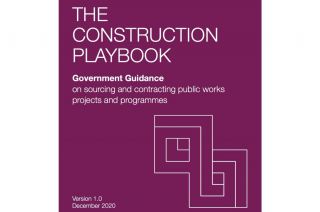
www.buildingsandcities.org/insights/commentaries/zero-carbon-brazil.html
Zero Carbon Buildings: A Brazilian Perspective

Simone Barbosa Villa (Federal University of Uberlândia) and Eduardo Grala da Cunha (Federal University of Pelotas) respond to the B&C special issue EDUCATION & TRAINING: MAINSTREAMING ZERO CARBON. Low and zero carbon building in Brazil is currently at the demonstration stage. The focus of the academic community is therefore on raising awareness and standards, rather than implementing changes in education and the curriculum.
In Brazil, the current discussion on zero carbon buildings remains one step behind Europe or North America and is focused on nearly zero energy buildings, considering the operational energy and following the stages of the building life cycle. Dalbem et al (2017), and Pacheco (2014) are examples of research that have this approach.
The thermal performance and energy efficiency standards in Brazil are low when compared to the same parameters in Europe or even in the US. For instance, in the southern region of Brazil, residential buildings experience similar climatic conditions to south of Europe. However, Brazilian regulations and standards allow high thermal transmittance from walls (2.5W/m2K) and roofs (2.3W/m2K). The thermal performance standard (Associação Brasileira de Normas Técnicas, 2013 - NBR 15575) does not create a situation where the nearly zero energy building is a reality.
However, Brazil has a very special characteristic: a spectacular quantity of solar radiation that produces enough energy to supply a typical residential building with only a few m2 of PV modules. The existing Brazilian energy mix is 74.5% renewable and clean sources (BEN, 2020). Given this situation, the construction industry lacks interest in zero-carbon buildings. So how could Brazil reach zero carbon buildings if its buildings are so far from energy efficiency and satisfactory thermal performance?
The country has two huge challenges. First, the demand for energy-efficient homes from end users is not clear. Buyers do not actively ask the supply side for energy efficiency, thermal performance, thermal comfort and reduced environmental impacts. The situation in Brazil's southern region reveals several problems with housing quality: lack of window airtightness, mould growth, low indoor temperatures. The acceptance of these problems inhibits the improvement of both construction quality and the building stock. There is also inertia in the construction supply side toward any improvement because they can sell whatever they produce.
Thus, the country has a thermal performance standard that defines a low-quality envelope without any concern for airtightness, thermal bridges, quality of windows and building thermal insulation.
In the sphere of public policy, a few actions have been taken to reduce carbon emissions. Among these initiatives are the approval of Law 10.295, in 2001 (Brasil, 2001), representing a milestone by establishing the national conservation policy and rational energy use. In 2013, the Performance Standard ABNT NBR 15575 (Associação Brasileira de Normas Técnicas, 2013), proposed a new approach to specification and building design including lifecycle, performance, efficiency, sustainability and maintenance of buildings (Dall'agnol et al, 2018). This is yet to be implmented. In 2019 the governmental state company Eletrobrás made a public call entitled Procel Edifica - NZEB Brasil.
Universities and research centres are moving the agenda forward by raising awareness about the energy efficiency of buildings in different social, cultural, economic and environmental contexts. Numerous research projects have broadened the understanding of the problems and offered practical solutions. Research institutions have been producing databases, technical standards and guides and even prototypes of complete systems or subsystems demonstrating the viability of energy efficient housing for the Brazilian context. Some of these noteworthy labs are: Laboratory of Energy Efficiency in Buildings at the Federal University of Santa Catarina, the Laboratory of Environmental Comfort and Energy Efficiency in the Built Environment at the Federal University of Minas Gerais, the Laboratory for the Inspection of Energy Efficiency in Buildings at the Federal University of Pelotas, the Energy Conservation and Energy Efficiency Laboratory at Fluminense Federal University, the Laboratory of Environmental Control and Energy Efficiency at the University of Brasília, among other research groups distributed throughout the national territory.
The path to the zero carbon agenda in Brazil relies on education and research. This occurs at the individual initiative of professors or research groups as there is no mandate from government or the professions on education and training. The advances include the direct and indirect training of undergraduate and graduate students, in addition to the provision of training for professionals in the field.
One unique feature of some Brazilian research groups is the inclusion of a wide range of students in all stages of research. Unlike many other countries, in Brazil there is frequent participation of secondary school, undergraduate, master's, doctorate and post-doc students. This collaborative network of different levels of knowledge works as a kind of complementary and continuous training for students and researchers, where activities and functions are organized according to the skills of each member and their level of knowledge. These teams involve undergraduate and graduate students directly in their funded research work, and have produced research of an exceptionally high standard. Equally important is their role in facilitating the wider social dissemination of environmental literacy and a social demand to act on urgent environmental and climatic issues.
In this scenario, the [MORA] Housing Research center in the Faculty of Architecture, Urbanism and Design at the Federal University of Uberlândia stands out. Different levels of students, researchers and professors participate in its projects which cover architecture, design, geography and computer science. MORA's mission includes the improvement of the environmental quality of Brazilian housing, strenghtening the ties between academia and practice, as well as providing a collaborative space for training researchers. Key research concerns involve spatial and environmental quality, sustainability, resilience, SDG goals, technological innovations, post-occupation evaluation and co-production. Since 2016 the group has been conducting research funded by the Brazilian and British government focusing on the resilience of social housing and addressing the SDG goals in the Brazilian scenario, in partnership with international institutions such as the University of Sheffield.
These practises, represented by educational and research standards, are also driving changes in university curricula, bringing new insights and disciplines to the field of zero carbon buildings and, therefore, new skills for students and teachers. In Brazil, the mandatory curricula for architecture courses are established by the Curricular Guidelines of the Brazilian Ministry of Education and the current version was implemented in 2010. This guideline for pedagogical projects and the minimum mandatory content of the subjects does not specifically include actions for zero carbon, but recommends content about the sustainability of the built environment. For example, architectural courses should provide knowledge on the protection of the natural environment and the rational use of natural resources. It also recommends providing students with an understanding of the issues involving the preservation of the landscape and assessing environmental impacts, as well as the associated appropriate skills (climatic, acoustic, lighting, energy conditions, etc) for achieving these goals.
We believe that these initiatives in education and research have promoted fertile conditons for creating the harmonious relationships between the built environment and the natural environment, as well as the multivariate environmental concerns in our climatic and cultural context. Although Brazil does not have a regulatory framework for zero carbon, education is providing a leading role that will help to make the country more prepared to face such challenges.
References
Associação Brasileira de Normas Técnicas (2013) NBR 15575: Edificações Habitacionais - Desempenho. Rio de Janeiro: ABNT. https://www.abntcatalogo.com.br/pub.aspx?ID=337
BEN - Balanço Energético Nacional (2020). Relatório Síntese: Ano Base 2019. Empresa de Pesquisa Energética (EPE), Ministério de Minas e Energia. Rio de Janeiro. https://www.epe.gov.br/sites-pt/publicacoes-dados-abertos/publicacoes/PublicacoesArquivos/publicacao-479/topico-521/Relato%CC%81rio%20Si%CC%81ntese%20BEN%202020-ab%202019_Final.pdf
Brasil (2001). LEI No 10.295, 17 de outubro de 2001. Política Nacional de Conservação e Uso Racional de Energia. Presidência da república - Casa Civil. http://www.planalto.gov.br/ccivil_03/leis/leis_2001/l10295.htm
Dalbem, Renata et al (2017). Discussão do desempenho da envoltória de uma passive house adaptada à zona bioclimática 2 em acordo com o RTQ-R. Ambiente Construdo [online], 17(1), pp.201-222. https://doi.org/10.1590/s1678-86212017000100132.
Dall'agnol et al (2018). Acelerando a eficiência das edificações no Brasil: ações prioritárias para líderes urbanos. Working Paper. Porto Alegre, Brasil: WRI Brasil. https://wribrasil.org.br/sites/default/files/EficienciaEdificacoes_pub.pdf
Pacheco, Miguel Teixeira Gomes (2014). Ventilação natural e climatização artificial: crítica ao modelo superisolado para residência de energia zero em Belém e Curitiba. PhD thesis. Universidade Federal de Santa Catarina, Centro Tecnológico. Programa de Pós-Graduação em Engenharia Civil. https://labeee.ufsc.br/sites/default/files/publicacoes/teses/tese_MiguelPacheco.pdf
Latest Peer-Reviewed Journal Content
A living lab approach to co-designing climate adaptation strategies
M K Barati & S Bankaru-Swamy
Mediation roles and ecologies within resilience-focused urban living labs
N Antaki, D Petrescu, M Schalk, E Brandao, D Calciu & V Marin
Negotiating expertise in Nepal’s post-earthquake disaster reconstruction
K Rankin, M Suji, B Pandey, J Baniya, D V Hirslund, B Limbu, N Rawal & S Shneiderman
Designing for pro-environmental behaviour change: the aspiration–reality gap
J Simpson & J Uttley
Lifetimes of demolished buildings in US and European cities
J Berglund-Brown, I Dobie, J Hewitt, C De Wolf & J Ochsendorf
Expanding the framework of urban living labs using grassroots methods
T Ahmed, I Delsante & L Migliavacca
Youth engagement in urban living labs: tools, methods and pedagogies
N Charalambous, C Panayi, C Mady, T Augustinčić & D Berc
Co-creating urban transformation: a stakeholder analysis for Germany’s heat transition
P Heger, C Bieber, M Hendawy & A Shooshtari
Placemaking living lab: creating resilient social and spatial infrastructures
M Dodd, N Madabhushi & R Lees
Church pipe organs: historical tuning records as indoor environmental evidence
B Bingley, A Knight & Y Xing
A framework for 1.5°C-aligned GHG budgets in architecture
G Betti, I Spaar, D Bachmann, A Jerosch-Herold, E Kühner, R Yang, K Avhad & S Sinning
Net zero retrofit of the building stock [editorial]
D Godoy-Shimizu & P Steadman
Co-learning in living labs: nurturing civic agency and resilience
A Belfield
The importance of multi-roles and code-switching in living labs
H Noller & A Tarik
Researchers’ shifting roles in living labs for knowledge co-production
C-C Dobre & G Faldi
Increasing civic resilience in urban living labs: city authorities’ roles
E Alatalo, M Laine & M Kyrönviita
Co-curation as civic practice in community engagement
Z Li, M Sunikka-Blank, R Purohit & F Samuel
Preserving buildings: emission reductions from circular economy strategies in Austria
N Alaux, V Kulmer, J Vogel & A Passer
Urban living labs: relationality between institutions and local circularity
P Palo, M Adelfio, J Lundin & E Brandão
Living labs: epistemic modelling, temporariness and land value
J Clossick, T Khonsari & U Steven
Co-creating interventions to prevent mosquito-borne disease transmission in hospitals
O Sloan Wood, E Lupenza, D M Agnello, J B Knudsen, M Msellem, K L Schiøler & F Saleh
Circularity at the neighbourhood scale: co-creative living lab lessons
J Honsa, A Versele, T Van de Kerckhove & C Piccardo
Positive energy districts and energy communities: how living labs create value
E Malakhatka, O Shafqat, A Sandoff & L Thuvander
Built environment governance and professionalism: the end of laissez-faire (again)
S Foxell
Co-creating justice in housing energy transitions through energy living labs
D Ricci, C Leiwakabessy, S van Wieringen, P de Koning & T Konstantinou
HVAC characterisation of existing Canadian buildings for decarbonisation retrofit identification
J Adebisi & J J McArthur
Simulation and the building performance gap [editorial]
M Donn
Developing criteria for effective building-sector commitments in nationally determined contributions
P Graham, K McFarlane & M Taheri
Join Our Community

The most important part of any journal is our people – readers, authors, reviewers, editorial board members and editors. You are cordially invited to join our community by joining our mailing list. We send out occasional emails about the journal – calls for papers, special issues, events and more.
We will not share your email with third parties. Read more



Latest Commentaries
COP30 Report
Matti Kuittinen (Aalto University) reflects on his experience of attending the 2025 UN Conference of the Parties in Belém, Brazil. The roadmaps and commitments failed to deliver the objectives of the 2025 Paris Agreement. However, 2 countries - Japan and Senegal - announced they are creating roadmaps to decarbonise their buildings. An international group of government ministers put housing on the agenda - specifying the need for reduced carbon and energy use along with affordability, quality and climate resilience.
Building-Related Research: New Context, New Challenges
Raymond J. Cole (University of British Columbia) reflects on the key challenges raised in the 34 commissioned essays for Buildings & Cities 5th anniversary. Not only are key research issues identified, but the consequences of changing contexts for conducting research and tailoring its influence on society are highlighted as key areas of action.